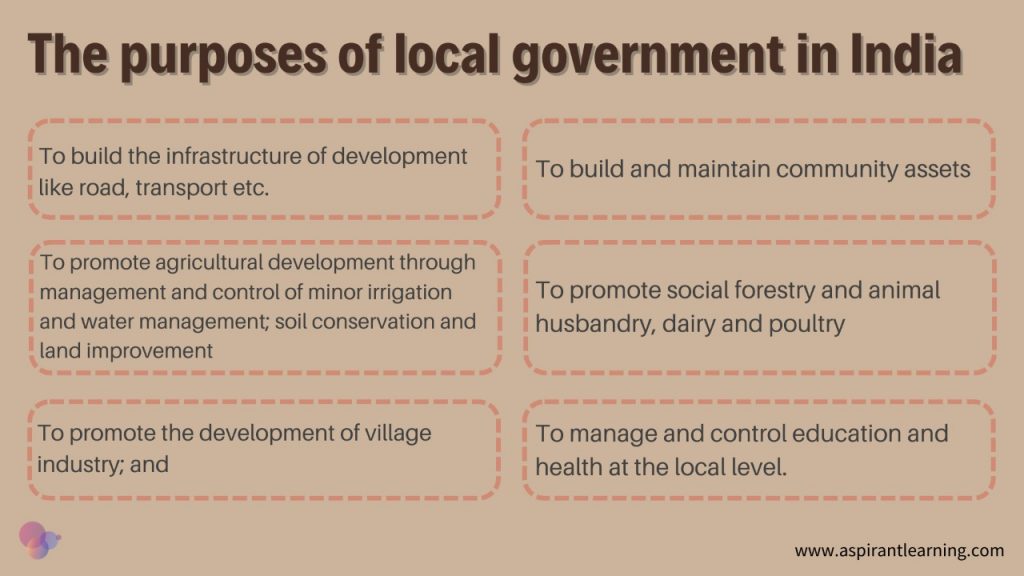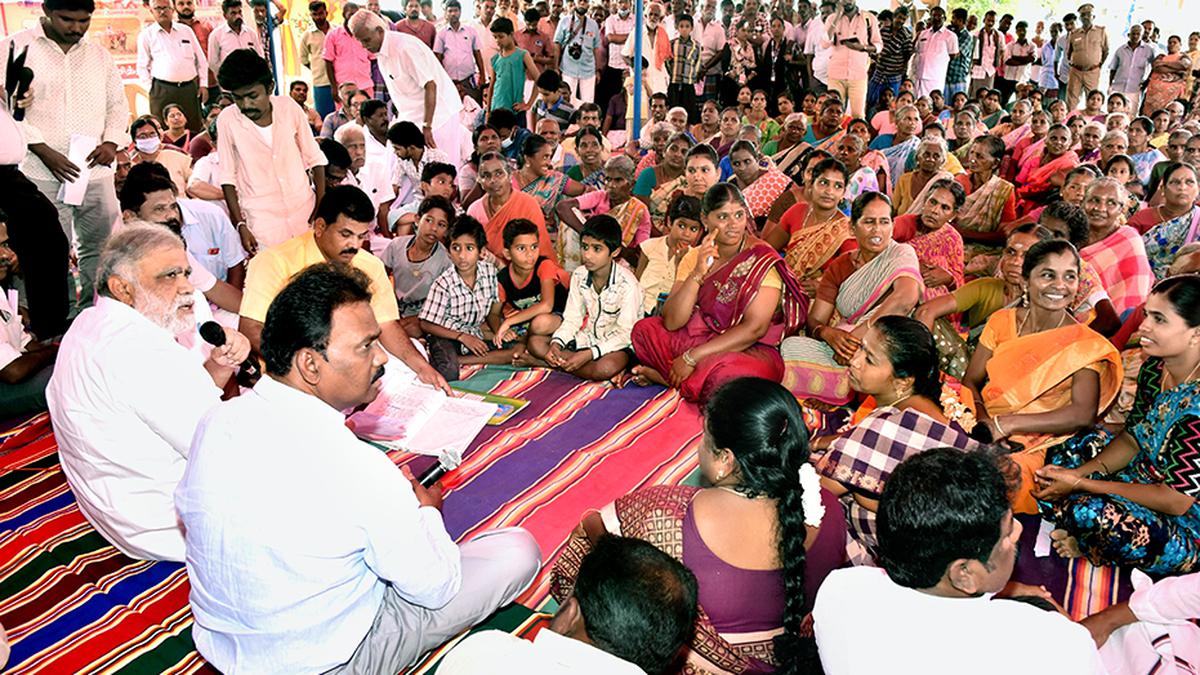News highlights:
Debates on federalism should include larger discussions on how power should be divided and shared between governments at the Union, State, and local self-governance.
Key Takeaway:
The 73rd and 74th constitutional amendments sought to institute a third-tier of governance in the federal framework through the devolution of functions, funds, and functionaries to local governments.
Local Government:
- About:
- Local Self Government is the management of local affairs by such local bodies who the local people have elected.
- The local self-Government includes both rural and urban government.
- It is the third level of the government.
- There are 2 types of local government in operation – panchayats in rural areas and Municipalities in urban areas.
Panchayat raj institutions:
- Constitutional Amendment Act:
- Panchayat raj institutions were constitutionalised through the 73rd Constitutional Amendment Act, 1992, to build democracy at the grassroots level and were entrusted with rural development in the country.
- After the Constitution came into force, Article 40 mentioned panchayats and Article 246 empowered the state legislature to legislate on local self-government.
Urban Local Governments:
- democratic decentralisation:
- Urban Local Governments were established for democratic decentralisation.
- There are eight types of urban local governments in India – Municipal Corporation, Municipality, Notified Area Committee, Town Area Committee, Cantonment Board, township, port trust, and special purpose agency.
- Ministries:
- At the Central level, the subject of ‘urban local government’ is dealt with by the following three Ministries.
- The Ministry of Urban Development was created as a separate ministry in 1985 (now the Ministry of Housing and Urban Affairs).
- Ministry of Defense in the case of cantonment boards.
- Ministry of Home Affairs in the case of Union Territories.
- Constitutional provision:
- The 74th Amendment Act about urban local government was passed during P.V. Narsimha Rao’s government in 1992. It came into force on 1st June 1993.
- Added Part IX -A consists of provisions from articles 243-P to 243-ZG.
- Added 12th Schedule to the Constitution. It contains 18 functional items of Municipalities and deals with Article 243 W.

Characteristics Of Local Government:
- Areas:
- A local government has a well-defined area fixed by the concerned state government.
- This area can be termed a city, town or village.
- Authority:
- The administration of a particular locality is run by an authority or body of persons elected directly by the people residing in a particular area.
- Decentralised authority makes it easy to administer.
- Finance:
- To perform its functions effectively, every local government unit must have adequate finances.
- The residents must pay taxes forced by the concerned local authority.
- Financial management will be transparent.
- Autonomy:
- It means the freedom of the local government to decide an act in the sphere of activities and functions allotted to them by the statutes under which they are created.
- Smooth functioning is achieved.
- Participation:
- The success or failure of the developmental plan at the local level depends upon the active participation of the local people for whom these plans are made.
- The local government provides an opportunity for the local people to participate in the administration.
- Clarity in administration can be achieved.
- Leadership:
- The people, who come under the purview of local government, especially those living in rural areas, are generally illiterate, inexperienced, non-professional and unaware of the functioning of the local bodies. Strong leadership, therefore, needs to be provided to those people.
- Accountability:
- Local governments are created to provide civic amenities to the people and are accountable at the local level.
- The residents of the local areas keep a watch on local authorities to ensure the adequate performance of their functions.
- Adequate transparency can be achieved.
Issues and challenges related to local government:
- Organisational incapacity:
- Every local government needs organisational capacity from engineers, office staff, and social mobilisers.
- Staffing of local governments is scanty.
- Lack of financial resources:
- The local governments are starved of money.
- While local governments have tax resources, such as property taxes, in many states, there is no emphasis given to their collection.
- Parallel bodies:
- Many states have created parallel bodies to take over the functions assigned to panchayats.
- For example, the Haryana government created a Rural Development Agency under the chairperson of the Chief Minister to oversee the work of local bodies.
- Lack of Effective Devolution:
- Local government is a state subject to the Constitution, and consequently, the devolution of power and authority to panchayats and urban local governments has been left to the states’ discretion.
- Most states in India are yet to provide adequate functional autonomy to the local bodies.
- Corruption:
- Local bodies are marred by corruption.
- Due to this, local bodies cannot function properly, which subsequently affects the development process.
Pic Courtesy: The Hindu
Content Source: The Hindu



